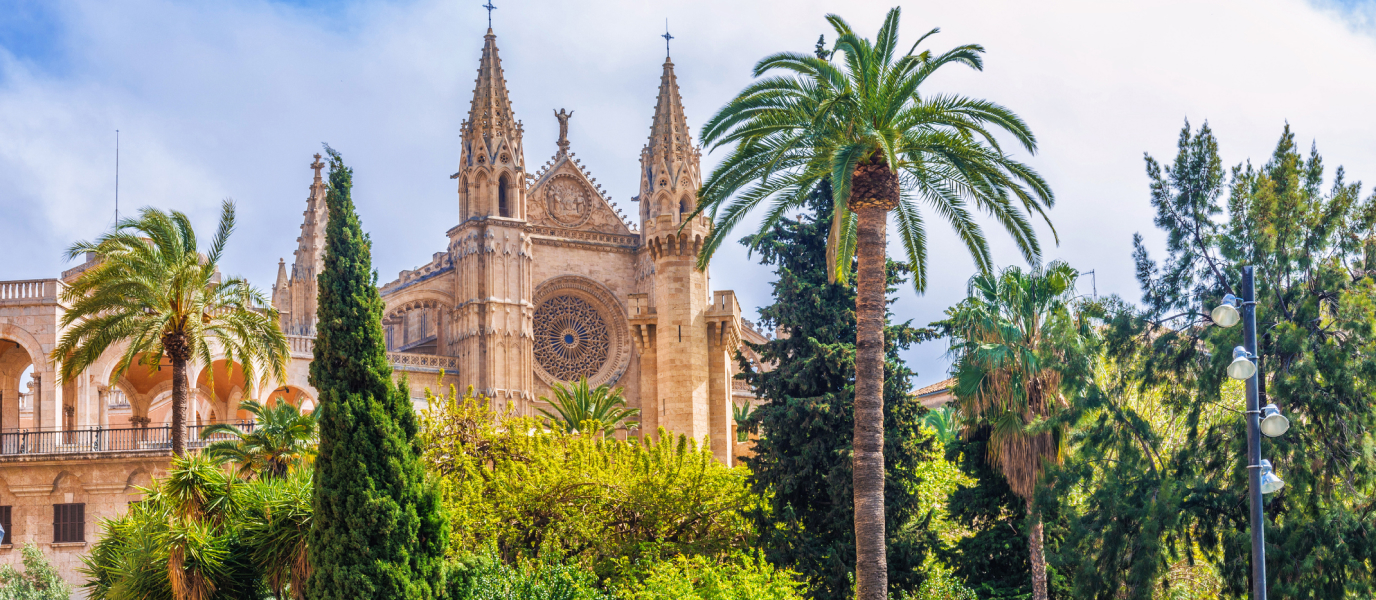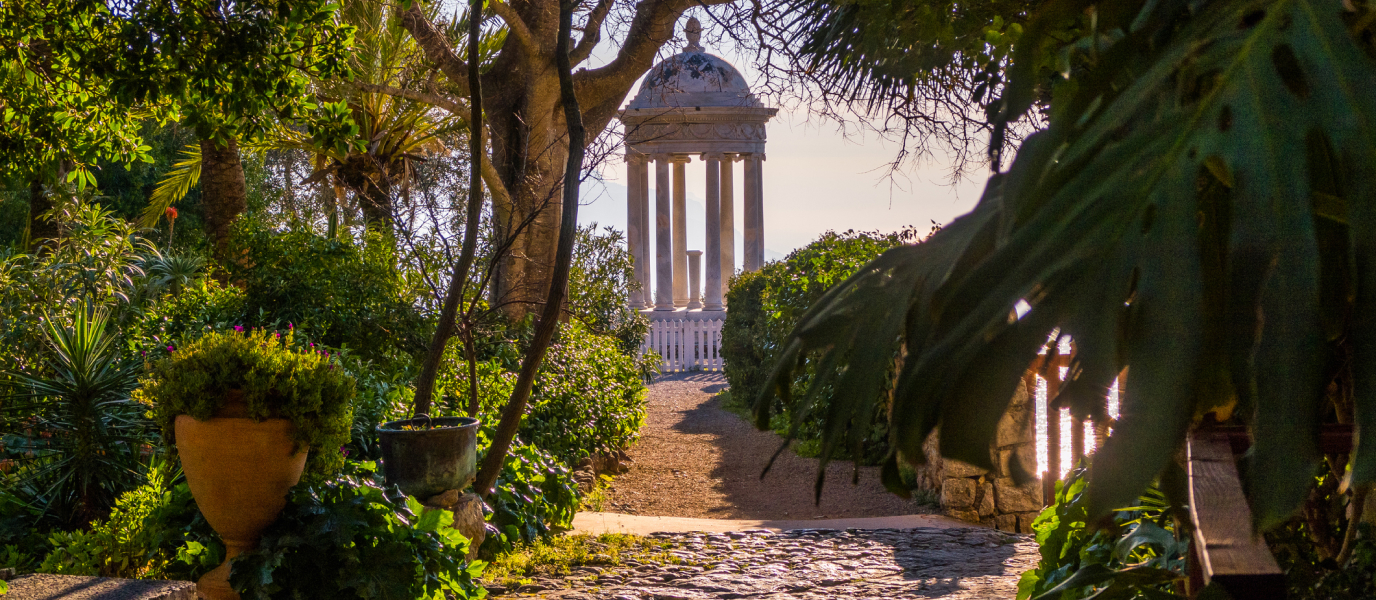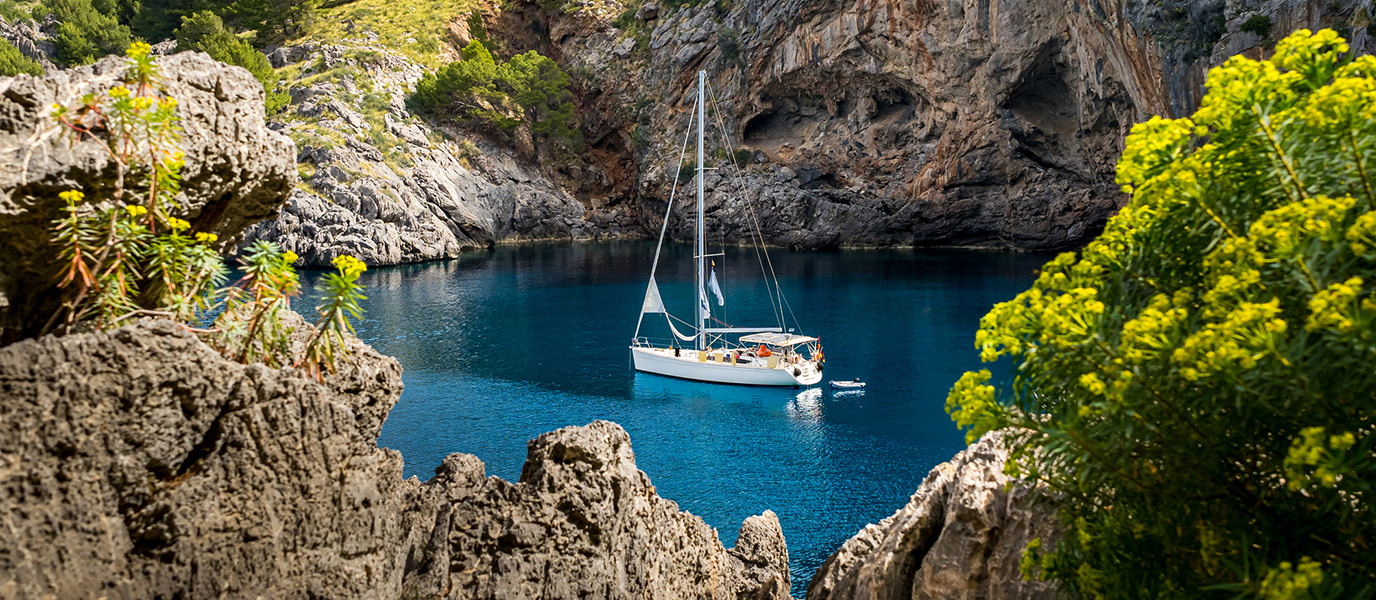An imposing pile of stones overlooks the Bay of Palma, just a few metres from the sea, which contrasts with the intense blue of the Mediterranean: rock against water, firmness against instability, faith against uncertainty. Saint Mary’s Cathedral in Palma (locally known as ‘La Seu’) has been the city’s iconic image for nearly eight centuries, when King James I of Aragon ordered that the Madina Mayurqa mosque be knocked down and a large temple devoted to Saint Mary be built in its place. It was one of his first decisions after conquering Majorca for the Christian kingdoms, thus keeping his vow to the virgin for saving him from the strong storm which battered the ships of the Crown of Aragon heading towards the island. The result was this beautiful Mediterranean Gothic cathedral, which was built over three centuries, although with subsequent changes and expansions. The building has set several records and is full of surprises which we will now reveal.
A brief introduction to the ‘Cathedral of Light’
Although King James I ordered the consecration of a cathedral in 1229, the former mosque, reconverted into a Christian temple, was used for many years. It was around 1300, under the reign of his son, James II, when the construction of a new Gothic cathedral began. The work started with the Royal Chapel, where the remains of the monarchs of the former Kingdom of Majorca now rest, and lasted three hundred years until the consecration of the temple in 1601.
One of the cathedral’s main features is its hall-church or basilica floor plan, a German influence which was typical in the Mediterranean Gothic and did not follow the French style of a Latin cross plan. Three naves form a wide rectangular space supported by very tall and slim pillars, and the central nave is one of the highest among the European Gothic cathedrals, with 44 metres (beaten only by Beauvais, 48 metres, and Milan, 45). The temple has a lot of light thanks to its 87 large windows and seven rose windows, which is why it is also known as the ‘Cathedral of Light’. The interior decoration is mainly Baroque and most of it dates back to the 17th and 18th centuries. The altarpieces in its 16 side chapels are from that period and in that style, although the most famous one is that presiding the left apse, the Corpus Christi altarpiece by Jaume Blanquer, representing the Last Supper.
Its main access is through the Mirador Portal, which is not at the entrance but on the south façade overlooking the sea. Protected by a 15-metre-high exterior pointed arch, it is considered to be a Majorcan Gothic masterpiece and has a bas-relief representing the Last Supper. On the opposite façade, the Almoina Portal has the statue of an angel with outstretched wings, sculpted by Guillem Sagrera, one of the cathedral’s main architects and an outstanding Balearic Gothic artist. The Main Portal, which was completed in 1601 in the Renaissance style, is presided by the Immaculate Conception surrounded by 15 symbols representing the Virgin’s immaculate nature.
A record-breaking Gothic rose window
The jewel and main icon of the cathedral is clearly its beautiful main rose window which, with a diameter of 13.8 metres, is the world’s largest Gothic rose window. Known as the ‘Gothic eye’, it was built in the 16th century over the high altar on the chevet, an unusual location which provides a magical view as you move on from the entrance, sweeping the nave with light filtered by thousands of coloured glass pieces. In total, 1,236 glass pieces form a mosaic creating the perfect Star of David. The glass pieces have been replaced several times; the last time was during the Spanish Civil War, when they were damaged by a bomb which fell on the nearby Almudaina Royal Palace.
The large rose window has a smaller counterpart in front of it, on the west façade. The two windows create a unique light phenomenon which can only be seen twice a year. On 2 February and 11 November every year, coinciding with Candlemas and the feast day of Saint Martin, the sunlight enters the large rose window in such a way that its coloured image is projected just below the rose window in front, forming what is known as the figure 8 or the Festival of Lights. That instant, which takes place around 8.30 in the morning only on those two days, occurs thanks to the perfect alignment of the sunrise with the cathedral’s orientation, i.e. approximately 120 degrees south-east.
Palma Cathedral in the 20th and 21st centuries: changes made by Gaudí and Miquel Barceló
The cathedral has been restored several times throughout its history but perhaps the most remarkable changes were those by Catalan artist Antoni Gaudí, who restructured the internal layout between 1904 and 1914 at the request of the bishop Pere Joan Campins. His main changes were relocating the choir in the central nave to the chancel, designing nine stained glass windows and restoring the large windows which had been walled over, thus providing further light. He also built new furniture and designed the baldachin over the high altar, an enormous heptagonal crown topped by the sculpture of a crucified Jesus Christ, with the Virgin and Saint John at his feet. In fact, that piece is a life-size model: the final metal structure was never made because the project suddenly ended after Gaudí argued with the contractor.
One hundred years later, the cathedral added a further chapter to its centuries-old history thanks to the prestigious Majorcan artist Miquel Barceló, who changed the interior of the Blessed Sacrament Chapel (the right-hand apse), which was inaugurated in 2007. Its large polychrome ceramic mural, inspired by the miracle of the loaves and fishes, is one of the cathedral’s main attractions nowadays.
The cathedral’s rooftops and museum
Between May and October, Palma Cathedral opens its rooftops for guided visits, which include hidden nooks and crannies such as the bell tower and its halls. The spectacular views of Palma and its bay from the 800-year-old building is the perfect way to end your visit. If you still want to know more about the cathedral’s history, you can visit the Cathedral Museum in Casa de l’Almoina next to the bell tower. The museum’s three halls, i.e. the former ‘Vermells’ Sacristy, the former Gothic chapterhouse and the Baroque chapterhouse, are works of art in themselves and they house interesting collections of paintings, sculptures plus gold and silver objects.






































































